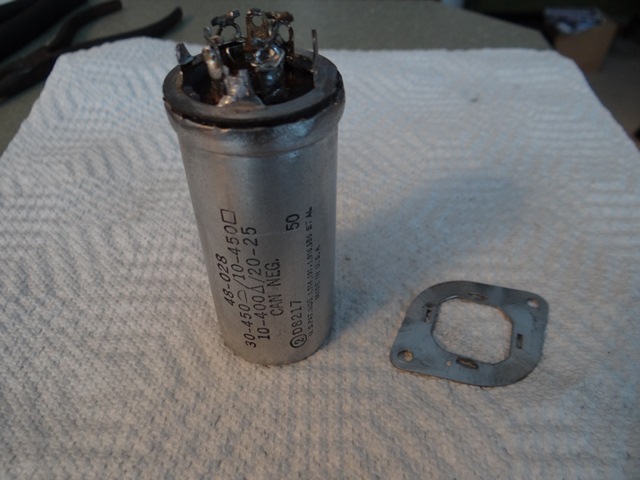Today I repacked the large electrolytic filter capacitors. These are the 3 largest caps in the radio, and are packed into a single aluminum canister. The original specs are 30, 10 and 10 MFD, but currently test at 19, 10 and 0 MFD.
There are typically 2 options to replace these caps. First, I could simply disconnect this cap below the chassis and leave it in place, wiring in new separate capacitors below the chassis. A popular alternative is to disassemble the canister, discard the original guts, and repack it with separate electrolytic caps.
I decided to repack the capacitor for a number of reasons, but mainly because I wanted to avoid crowding parts together below the chassis, leaving me more room to work. I cut away the crimp at the bottom of the canister with a table grinder. The guts were as expected - thin layers of aluminum wrapped in paper that was at one time soaked in an electrolyte. The cap appeared to have signs of burning, perhaps explaining why one of the 3 showed infinite resistance.
Once the original wrapping was discarded, I cleaned the canister and bottom, drilling holes to allow the new leads to be soldered to the legs. Since I had axial capacitors, I routed a heavy wire from the negative terminal to the top to allow the 3 capacitors negative wires to be soldered together. The original caps shared a common ground too. The new caps fit snugly in the can, and it was sealed back together with silicone. The new cap tests good on all 3 leads now. When the silicone hardens, I'll remount the cap to the chassis and connect it back to the circuitry.
Electrolytic capacitor (3-way) before disassembly:
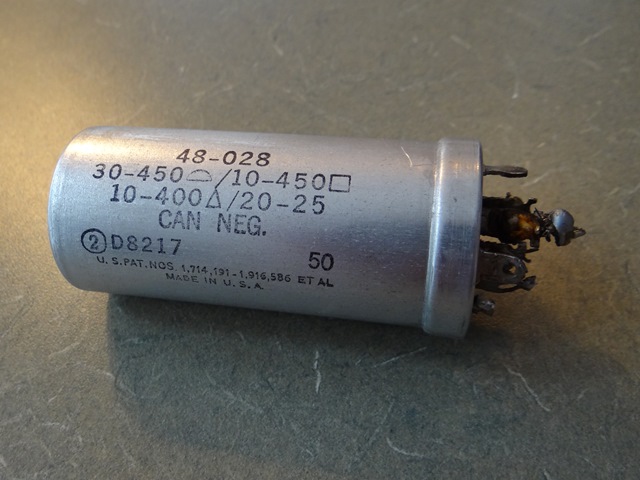 The canister crimp is ground away:
The canister crimp is ground away:
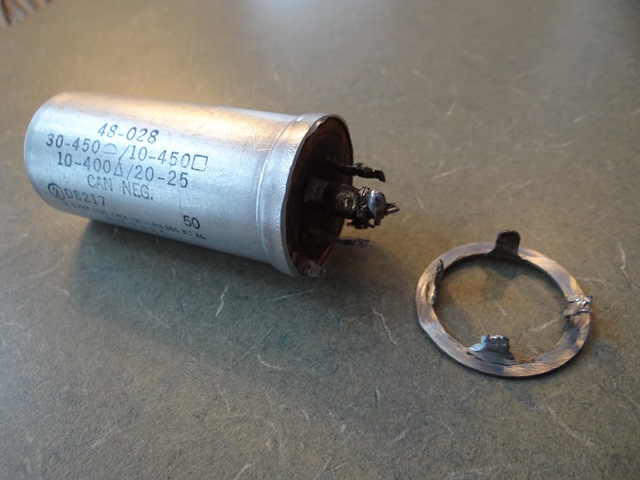 Original wrapped aluminum and paper interior:
Original wrapped aluminum and paper interior:
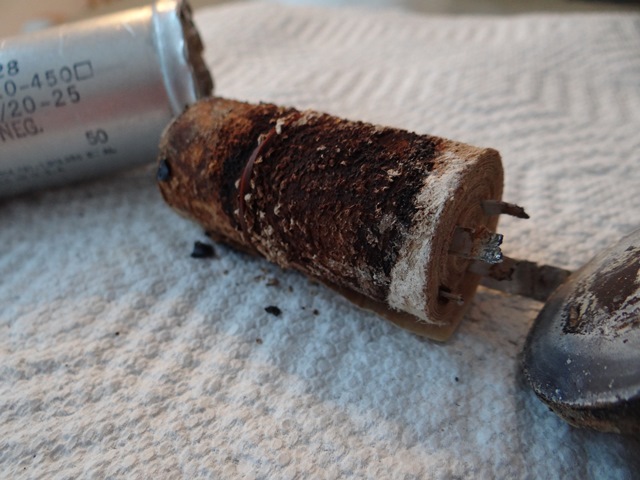 New electrolytic capacitors are mounted on the base:
New electrolytic capacitors are mounted on the base:
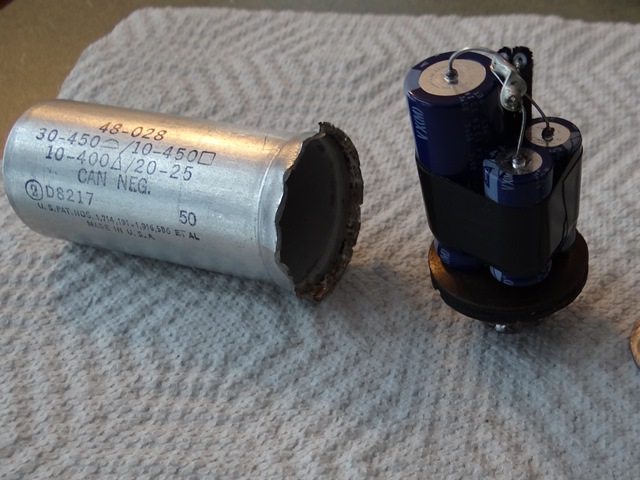 Capacitor is closed and sealed with silicone:
Capacitor is closed and sealed with silicone:
